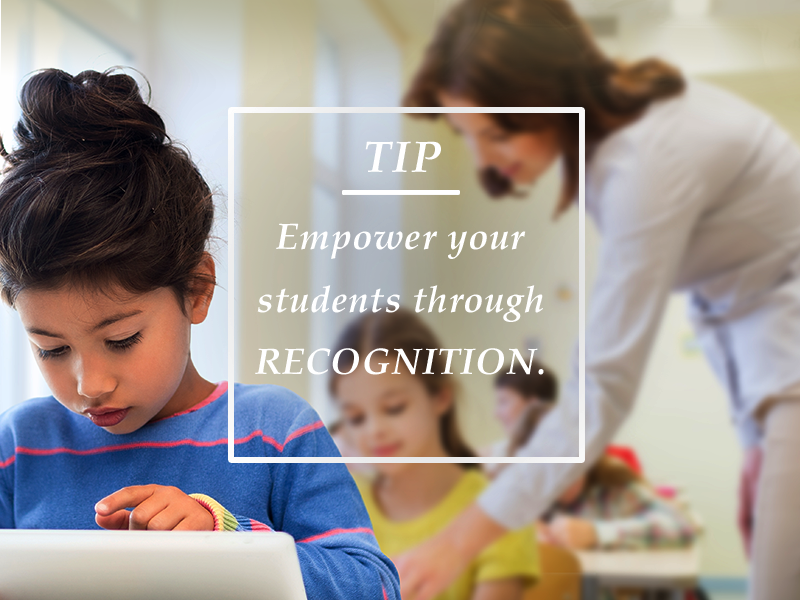Establishing classroom rules. A positive note home to parents. Clear and organized lesson plans. These are a few of the strategies proven to be effective in creating a positive learning environment for you and your students. Whether you’re a new or experienced teacher, these ten classroom management strategies will help you maintain a positive and productive classroom environment.
1. Set the Tone from Day 1
This school year may be winding down but the next one is right around the corner. It’s never too soon to think about setting the tone. Students have an astute ability to size you up from the first day of class. The tone you set and how you handle your classroom is most important in the first few hours. It is important to create an environment of mutual trust and respect, but students also need to know that there will be consequences for misbehavior. If you set the wrong tone on Day 1, it will be very difficult for you to regain control later on.
2. Involve Your Students in Establishing Classroom Expectations
An important way to build mutual respect and personal responsibility with your students is by establishing class rules as a group. Try to keep the list short, and frame the expectations in a positive context (i.e. “Listen while others are speaking,” as opposed to “Do not interrupt”). Have your students agree to the expectations, display them in a prominent place, and be scrupulous about enforcing them.
3. When Students Break and Follow the Rules
As part of the exercise of establishing classroom rules, have your students help define the consequences for breaking the rules. The consequences should be relevant to the infraction and gradual in severity (i.e. Step 1 = warning, Step 2 = short detention after class/school, Step 3 = written plan for improvement, Step 4 = sent to principal’s office). In addition to setting consequences for breaking rules, you should implement a positive reinforcement system. If students follow the rules they should be rewarded – i.e. extra computer or recess time, treasure box, lunch with the teachers, etc.
4. Empower Your Students through Recognition
Giving your students recognition – rather than simple praise and extrinsic rewards – for achieving a goal can be a powerful way to encourage future learning and growth. For example, rather than simply writing “Good job” on an assignment, have a conversation with the student about why the assignment was done so well. This will help create a learning opportunity where the student will feel empowered to perform well again in the future. Other forms of recognition to try include sending a note home to the parent on a job well done; creating a classroom brag board to share work students are proud of; and eliciting peer recognition amongst your students.
5. Begin Each Class by Engaging Your Students
Use creative ways to get your students’ attention at the beginning of class. Ask a question that is interesting and relevant to them such as “Who watched the basketball game last night?” or “Has anyone heard Rihanna’s new song?” Start the lesson once everyone is seated with their eyes on you.
6. A Clear Lesson Plan is Key
Students thrive when the classroom is organized and well-structured, and a clear lesson plan is key to this dynamic. Begin each class by telling your students the learning objectives of the lesson and what you expect from them.
7. Connect with Your Students
Students too often report they do not feel as though educators care about them. A powerful way to connect with your students is by sharing something about yourself. Tell your students about a struggle you had and how you overcame it. Your stories will enable your students to connect with you – an important part of the process of building mutual trust and respect.
8. Smooth Transitions
Minimize disruptions and maintain classroom control by establishing smooth transitions from group work to lecture time, restroom breaks, etc. Each type of transition should have a step-by-step process that will initially need to be micro-managed. Once the procedure is established, your students will follow it without thinking about it, and disruptions caused by transitions should be minimized.
9. Provide Both Verbal and Written Instructions
Students may not understand what they are supposed to do if you only provide verbal instructions. Make sure to write down instructions for an assignment, group work, etc. so students can refer back to the directions and understand what is expected of them.
10. Ask Others for Help
One of the best ways teachers can learn how to create an effective classroom management system is by tapping into the wealth of knowledge and experience of other teachers. Find a mentor and lean on your peers for help. Chances are that you’ll find another educator who has gone through the same struggles you may be facing and can offer words of wisdom and advice.
Classroom management is essential to effective learning and your ability to spend your time doing what you love—which is teaching!
Have anything to add? We’d love to hear from you! Share your thoughts, feelings, or concerns in the comments below.
